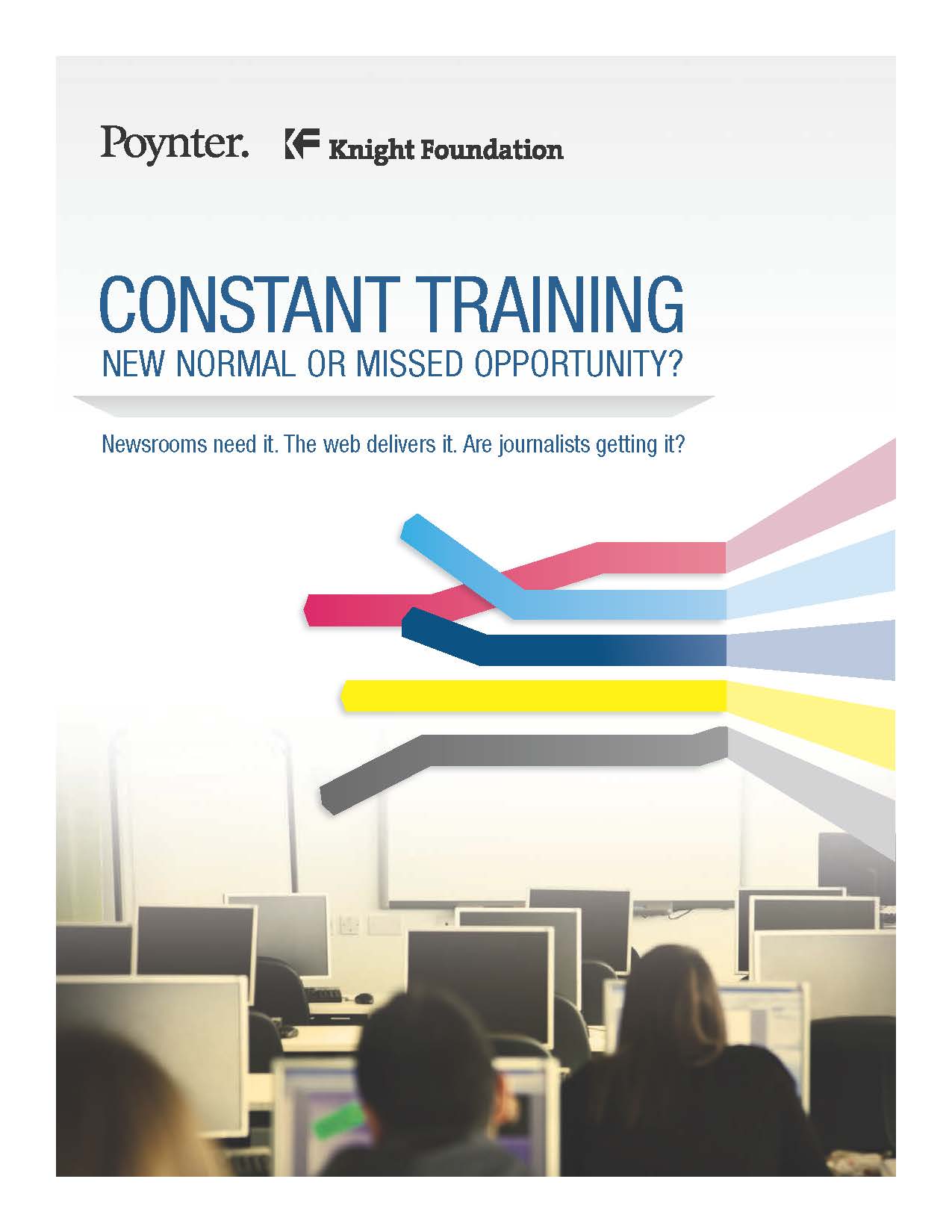Constant Training: New Normal or Missed Opportunity
As part of the grant to The Poynter Institute for the creation and running of News University, an online training program, the Knight Foundation asked that we conduct studies as to how effective training was and better understand the training needs of journalists. One study was called “Constant Training” and it was based on a survey of newsrooms and journalists. Here’s what I wrote in the introduction:
These results are from an anonymous survey of staff members from 31 newsrooms around the country conducted by The Poynter Institute on behalf of the Knight Foundation.
The survey was conducted in newsrooms that ranged in size from 20 to 150 staff members. More than 1,650 staff members were possible participants for the survey, which achieved a 72.5 percent response rate. The survey was conducted online in June-July 2014.
Is the glass two-thirds full? Or, more important to ask, is it one-third empty?
A third of the journalists in the survey [34 percent] said they received no training in the past 12 months. But the numbers varied widely in different newsrooms. While in some newsrooms, nearly everyone had gotten training, in one newsroom, only 17 percent reported receiving training. In six of the newsrooms, less than half of the staff members had received training. Considering the abundance of free or low-cost training available, those numbers seem strikingly high.
One of the key findings was the hunger journalists had for training. However, then, as in now, time or the lack of time, was a key factor as whether journalists got the training they needed or wanted.
This raises the point that everyone, especially journalists, lives in a world of constant learning. Each new technology creates new opportunities and new challenges. Which create new openings for training. To be successful in the digital world, a journalist needs to embrace the idea of “constant training” to meet the changing demands of the workplace.
Other results from our training survey are more troubling.
Actually doing the training presents a significant problem. Lack of time was cited by 62 percent of the participants as the number-one factor that prevented them from getting the training they needed or wanted. That’s twice as many responses as lack of funds, the second-place factor, which was selected by 34 percent.
One final point involved the focus of newsrooms in 2014:
The survey also provides an unsettling insight into the focus of the newsrooms surveyed. The journalists surveyed still see their newsrooms as print-centric or straddling the fence. Only one in 10 said that their newsrooms are thoroughly
“digital-first.”
Eric Newton wrote the introduction to the report.

 Poynter Knight NewsroomTraining_report2014_final_v4opti
Poynter Knight NewsroomTraining_report2014_final_v4opti